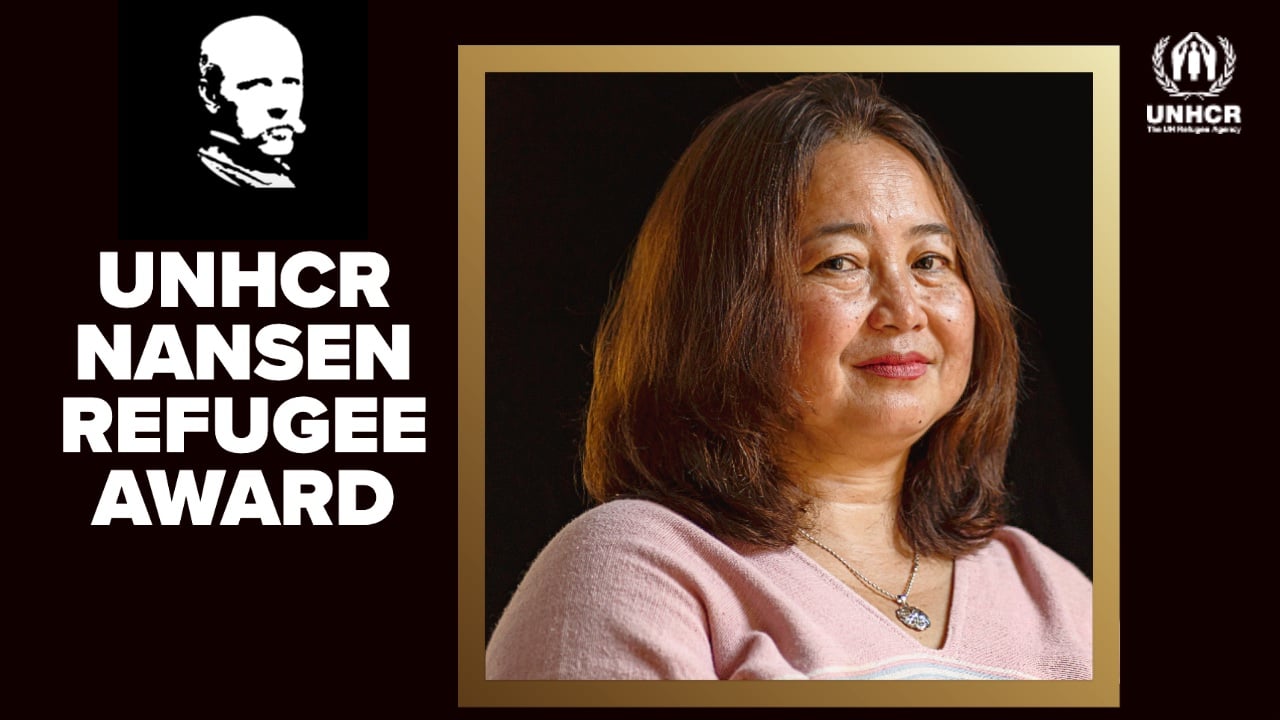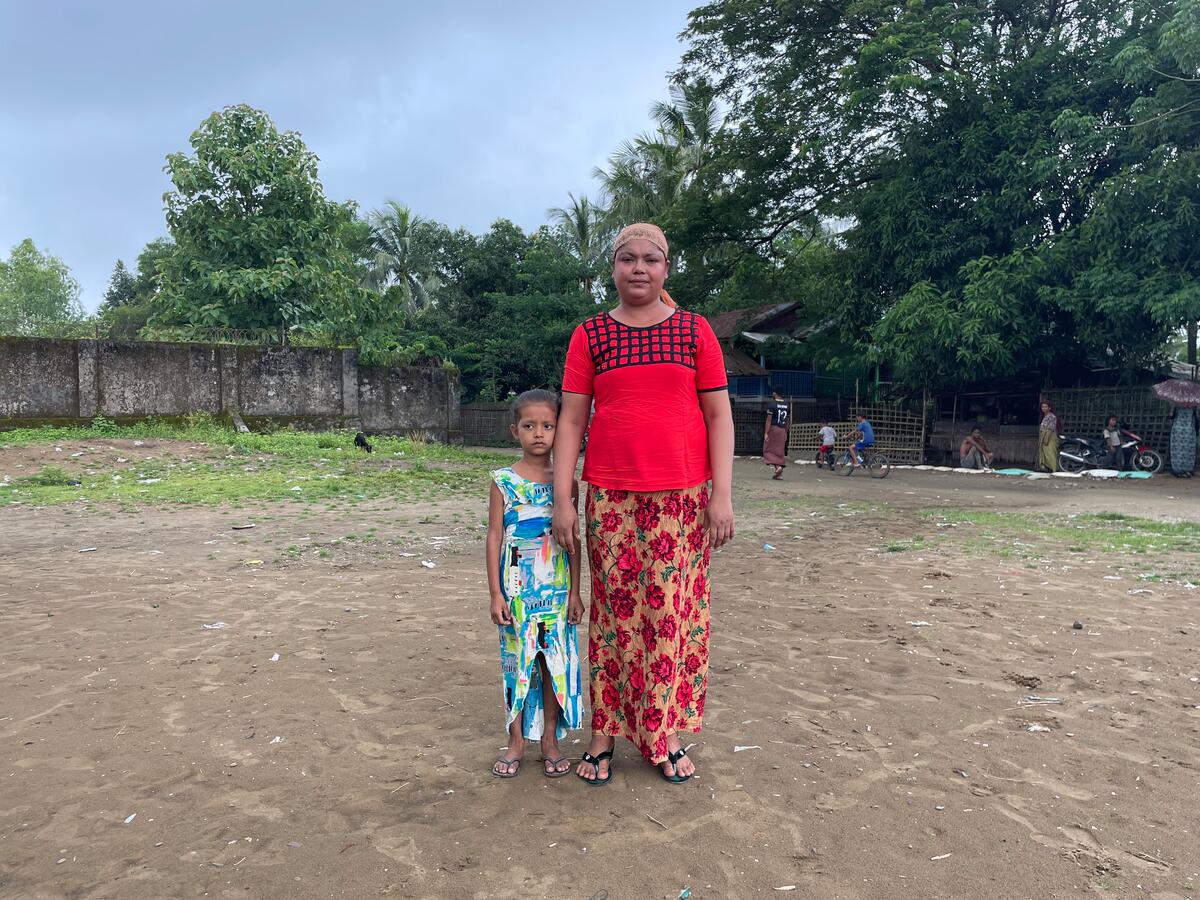Timor Emergency Update
Timor Emergency Update
Major developments
A March 31 deadline set by the Indonesian government for refugees to decide whether to remain or return to East Timor is prompting more and more of the estimated 100,000 East Timorese in West Timor to head home. The number of returnees is not as high as it was in November and early December, when thousands went back daily. But the time limit, coupled with threats to cut off aid, is increasingly putting pressure on refugees to repatriate.
In meetings with six Indonesian ministers in Jakarta early in March, visiting Assistant High Commissioner Søren Jessen-Petersen received assurances that "necessary flexibility" would be exercised in dealing with the refugees. "UNHCR is very much in favour of an early return - the earlier the better," Mr. Jessen-Petersen said at the close of a week long trip to East Timor and Indonesia. But he warned any cut-off date could reopen fresh wounds and create instability in the region. He also urged a halt to the continuing campaign of intimidation by pro-Indonesian East Timorese opposing repatriation and expressed hopes that conditions could be put in place that would end the refugee problem in two to three months.
Since UNHCR began a repatriation programme on 8 October with assistance from the International Organization for Migration more than 155,000 refugees have gone home. Jessen-Petersen, along with UNHCR's Asia Bureau Director François Fouinat, had come to Indonesia to try and accelerate resolution of the refugee problem. He said half of the remaining refugees are likely to return and expected the rest to resettle locally.
West Timor
Despite Indonesia's assurances of flexibility, the word is being spread that assistance will come to a halt by the end of the month. At a meeting of refugee women organized by UNHCR at a Kupang hotel on 11 March, West Timor Governor Alexander Piet Tallo said, "I have not received any information from the central government on the question of assistance. Let us all pray together that it will be continued."
The governor's announcement was met with a tinge of bitterness in the camps. "We are Indonesians, why are they driving us away," said one East Timorese student at Tuapukan camp outside the provincial capital. A refugee woman broke down and cried to a UNHCR staff member, saying her house had been burned and she has nowhere to go. Later, a group of 270 Moslem East Timorese left nearby Noelbaki camp and sailed for South Sulawesi under the government's transmigration programme.
One refugee leader told a UNHCR team outside the border town of Atambua that the East Timorese in the encampments are worried. Food rations have become sporadic since the New Year. There are also concerns about rumours that the Indonesian government will soon set up immigration control points, making travel along the border difficult and costly. A daily average of about 300 Timorese along the West Timor border are now joining repatriation convoys following a sharp drop since mid-December.
Census
The Indonesian government is conducting a census to determine the number of East Timorese still in West Timor. Teams composed mostly of students fanned out late this month in the week long effort that would include "counselling sessions". Results are expected by next month.
An estimated 200 refugee sites are scattered in West Timor mainly along the borders with East Timor - in Kefamenanu surrounding the Oecussi enclave and in the Atambua and Betun regions. Two thirds of the refugees are in these areas, where some camps are so remote and inaccessible in this rainy season. The three largest camps, which shelter a third of the total number of refugees in West Timor, are located outside Kupang: Tuapukan, the largest with a reported population of 23,000; Noelbaki, 6,000; and Naimbonat, 5,000.
The Kupang camps no longer appear as crowded as they were in September when most people had only palm fronds over their heads. Refugees now stay in barracks of corrugated iron roofs and plywood in Tuapukan and Noelbak, or tarpaulin and thatch in Naimbonat. However, the camps are squalid and disease-ridden in the rain and slime.
Along the border areas, many huts have been dismantled. Tents and barracks appear either half empty or deserted.
UNHCR has limited assistance in the encampments. Mats, plastic sheeting and kitchen sets have been handed out. It also provides sanitation and water services. In the Kupang camps, UNHCR is present during the day to register returnees and to provide counselling. UNHCR's main programme is repatriation. UNHCR will provide assistance to those who will resettle locally, once a profile of the residual caseload has been determined.
Security
The security situation in the Kupang camps, which largely hosts TNI, police and militia and their families, has eased since Indonesian President Abdurrahman Wahid visited the area with a call for peace and reconciliation between Indonesia and East Timor.
About a dozen incidents of stoning and harassment of refugees and aid workers have occurred since the New Year. The Indonesian army and police have been generally cooperative in escorting repatriation convoys.
Mass Information
UNHCR has pursued an effective mass information programme about conditions of return. Despite threats by pro-Indonesian groups, teams regularly go into the camps to distribute leaflets and show video tapes of life in East Timor's villages, where the refugees come from.
Materials are also broadcast on radio stations and advertisements are published in the Kupang dailies.
To counter misinformation by those opposing repatriation, UNHCR teams go to areas in East Timor where ex-militias allege atrocities against returnees have been committed. In all cases, these allegations have proved untrue and were meant to discourage returns.
Often, refugees request UNHCR for video footage of their final destinations in East Timor or locate a relative. These reports, along with weekly family reunions in the border areas, have become a decisive factor in prompting repatriations. Thousands attend these weekend reunions.
East Timor
On a sunny Wednesday morning in late March, the motor vessel Patricia Anne Hotung docked at the Dili pier ferrying from West Timor the first large group of East Timorese previously enlisted in the Indonesian Army, or TNI, and military civilian employees. Moments later, an UNTAET forklift hauled down from the ship belongings the 60 ex-TNIs and civil servants had taken with them when they went to West Timor in the aftermath of the violence that followed the 30 August vote for independence in East Timor. Bundles of prized possessions, including an ornate pink coloured double bed, a motorcycle, furniture, TV sets and radios, were transported to a receiving area for inspection by UNTAET troops.
The scene was reminiscent of the final days of Indonesia's 24-year rule in East Timor when refrigerators, office equipment, furniture and other belongings of East Timorese awaiting evacuation were crammed along the Dili harbour as militias went on a burning and looting rampage. And as the more affluent of East Timorese society return from the refugee camps in West Timor, the sight of trucks carrying their possessions is fuelling resentment among people who never left and have become more impoverished because of the militias' atrocities last autumn.
Individual TNIs have been slipping quietly into East Timor. But in recent days, small groups of former soldiers have been coming out of West Timor after their commanders told them they can resign their commission and head home. The first ex-TNIs to join a UNHCR convoy after being demobilized this year was a group of 4, then 9, then 22.
No major problem has been reported among these returnees. But the latest arrivals pose difficulties and signal a new challenge for UNHCR. Altogether numbering around 500, including their families, these ex-TNIs are heading for Ailieu, a mountain cantonment area for the Falintil, or Armed Forces for the Liberation of East Timor, overlooking Dili. Falintil soldiers with automatic rifles slung on their shoulders roam the area. The U.N. Civilian Police (Civpol) has deployed 28 unarmed men in Ailieu, but there are no troops of the U.N. Peacekeeping Force in the district.
UNHCR is discussing with the U.N. Transitional Administration in East Timor (UNTAET) and Civpol, Falintil and CNRT, the political umbrella organization in East Timor, arrangements for the safe return of the ex-TNI men who are temporarily sheltered at a transit centre in Dili. "The people of Ailieu know who are innocent and who are guilty of crimes," said one of the returnees. "We have no reason to be afraid because we did nothing wrong." Perhaps, but as more ex-TNIs and former militias come home from more sensitive groups of refugees remaining in West Timor, UNHCR expects problems ahead.
Protection
In general, returnees so far have had no major difficulty integrating in their communities. But because emotions still run high, there are isolated reports of beatings and looting of returnees. The level of intensity among people seeking to exact revenge varies from one place to another. However, UNHCR is unaware of killings attributed to settling of scores.
The CNRT has quietly urged villagers to refrain from taking the law into their own hands and at least, for now, confine their activities to compiling evidence against those who have committed heinous crimes for a day of reckoning, when courts are convened. Beatings of returning ex-militias, especially those identified as having participated in plundering and burning, are condoned for the most part. In some rural areas, "buffalo justice" is meted out - cows are given to victims of atrocities as compensation.
But as with everything else in East Timor, the beginnings of a justice system is slowly and painfully rising from the ashes. A few local prosecutors and judges have been enlisted by UNTAET but they need to undergo training. Civpols number only 600 of the 1,600 proposed. There are not enough jails and the U.N. detention centre in Dili can hold criminals only for a few days.
CNRT is sending some ex-militias and former TNIs to attend a "reeducation programme" in Ailieu and several other areas. Two former Indonesian soldiers told a UNHCR staff member that in Ailieu they were lectured about the need to integrate peacefully in their community and become a productive cog in the new society. But they say they were pretty much left on their own in an ostensibly subtle way of wooing them. Some ex-militias are known to have been enlisted in the Falintil, as Falintil fighters were coerced to carry on the biddings of the military during the Indonesian rule.
"East Timor is a ticking time bomb," says a priest at the border town of Atambua. "People are impatient. They want things to happen now." Practically a ghost town last autumn, Dili has dramatically come to life. More shops and restaurants are rising from the rubble, and the town market is expanding each day as people harvest what little they have planted at the start of the rainy season in November. But 90 percent of the population of 800,000 is unemployed and around $20 million has come in of the $500 million aid the international community has pledged.
Shelter
The only major rehabilitation project being implemented in East Timor is UNHCR's shelter programme, although UNICEF is also rebuilding schools. Carried out through eight NGOs, the programme calls for the distribution of 35,000 shelter kits through the end of the year. The kits contain timber, roof sheeting, cement, nails and tools. Of the 7,000 kits UNHCR has brought to East Timor, 4,187 have been distributed in 12 of East Timor's 13 districts. As security improves, distribution has been accelerated.








